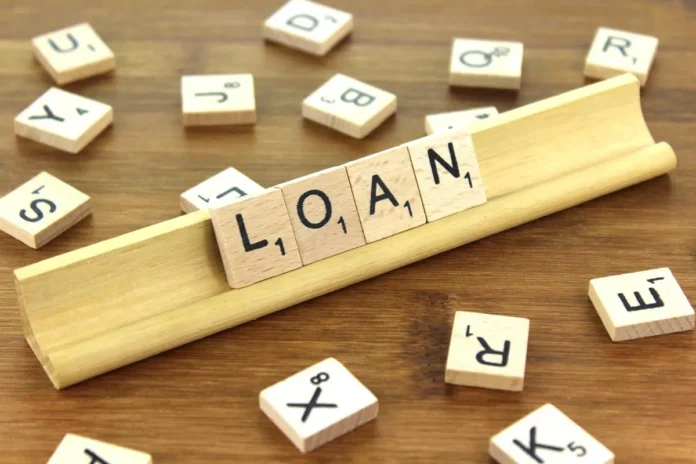Be it a medical emergency, vacation, home renovation, or a wedding, you might need extra money for some expenses. But if you’re not financially ready for them, the bills may zero out your savings or harm your finances.
In such instances, a personal loan comes in handy. Personal loans not only offer a significant amount but they are approved and disbursed almost immediately. That’s why they are among the most popular types of loans today.
Still, to qualify for a personal loan, you must meet the eligibility criteria set by the lender. Here’s how you can improve your personal loan eligibility to ensure approval with favorable rates and terms.
Know If You Can Prequalify

This process allows applicants to research and compare loan options without disturbing their credit scores. To prequalify, you need to provide some personal and financial information.
So before you go through the hassle of applying for a loan that you might not even qualify for, check if you prequalify. This way, you can save time and focus on loans that are more likely to be approved.
Although personal loan requirements vary by lender, most of them specify similar criteria when examining your loan application:
- Employment history
- Education
- Income
- Credit utilization ratio
- Current credit card balances
- Credit score and history
Boost Your Credit Score
Keep in mind that your credit score helps lenders assess how likely you’ll pay off your debt, which reflects your creditworthiness. The higher your score is, the more likely you’ll get approved for the loan.
To boost your credit score, do the following:
- Be sure to pay your bills such as credit cards and car loans on time.
- Lower your credit utilization ratio by paying your balances early and spending less.
- Keep old accounts active and open because the longer you’ve had your credit accounts, the higher your score will be.
- Have different accounts open to show the lender that you can manage various debts.
- Only apply for new accounts when necessary. Note that too many new accounts and hard credit checks in a short period can present you as a risky borrower.
Remember that not all lenders are equal. Some might have more flexible and easy requirements than others. As such, it’s crucial to explore all options and shop around. Look for lenders that offer personal loans with low-interest rates, shorter repayment periods, and reasonable application fees. In other words, find the best loan option for your situation.
Double Check Your Credit Report

Before applying for a personal loan, you must know where you stand. With that said, get a copy of your credit report. You can get a free report annually at AnnualCreditReport.com. Review it to ensure they are free of inaccuracies or errors.
If you notice any incorrect information, dispute it right away. The good news is that you can make the request online, and the process is free of charge. Contesting any mistakes on your credit report can improve your personal loan eligibility.
Common lapses that could hurt your credit score include:
- Incorrect credit limits
- Closed accounts marked as open
- Wrong accounts
Refrain from Requesting More Money
Asking for too much cash than you need can make you a risky borrower. Think about your good reasons to get a loan, set a specific amount to that need, and only request for that amount. The lender might decline your request if you ask for more than what they think is you can afford.
Plus, asking for too much money also means having a lot of debt in the future. If that’s not something you’re prepared for right now, then don’t ask for it! What’s more, remember that a more expensive personal loan tightens your budget because higher monthly loan payments affect your capability to meet other financial obligations.
Pay Off Your Existing Credit Card Bills And Loans

Ensure that you pay off your outstanding debts because they increase your debt-to-income ratio. Applying for another loan and getting approved won’t be easy if you have many different credit cards and loans to your name.
Lenders will think that you may default on repayment or don’t have enough income. The ideal debt-to-income ratio should be lower, perhaps at least 30% – 40%. Your debt-to-income ratio is the percentage of your monthly loan payments divided by your gross income in a month.
The good news is that not all lenders impose harsh and rigid debt-to-income requirements. However, a lower debt-to-income ratio will help you prove that you can manage and afford your current debt and take on more. In general, you can improve your debt-to-income ratio by lowering your debt and boosting your income.
Find The Right Lender
Rather than applying to many lenders with the requirements that you can’t fulfill, find a lender with eligibility conditions you can meet. So, do your homework and determine which lenders are willing to work with your current situation.
The Internet is a great place to start your research. You can use search engines to find lenders with specific requirements, even if you have bad credit or no collateral. Check their websites and read through any terms and conditions for borrowers before reaching out to them on the phone.

Double-check all information and compare different loan offers because some lenders might have hidden fees. Don’t forget to ask the lender questions about their policies and procedures, as well as any other relevant information you need to make an informed decision.
Websites like creditninja.com offer a simple approval process and fast funding.
Final Thoughts
There’s no formula for securing personal loan application approval. Requirements like income and credit score vary from lender to lender, and some creditors consider other data such as education level or free cash flow. If you need extra money now but can’t qualify for the loan, follow the tips mentioned to boost your chances of qualifying. Remember that having good credit and the right income are factors lenders consider when reviewing applications. So, make sure to keep them updated via monthly payments on time!









